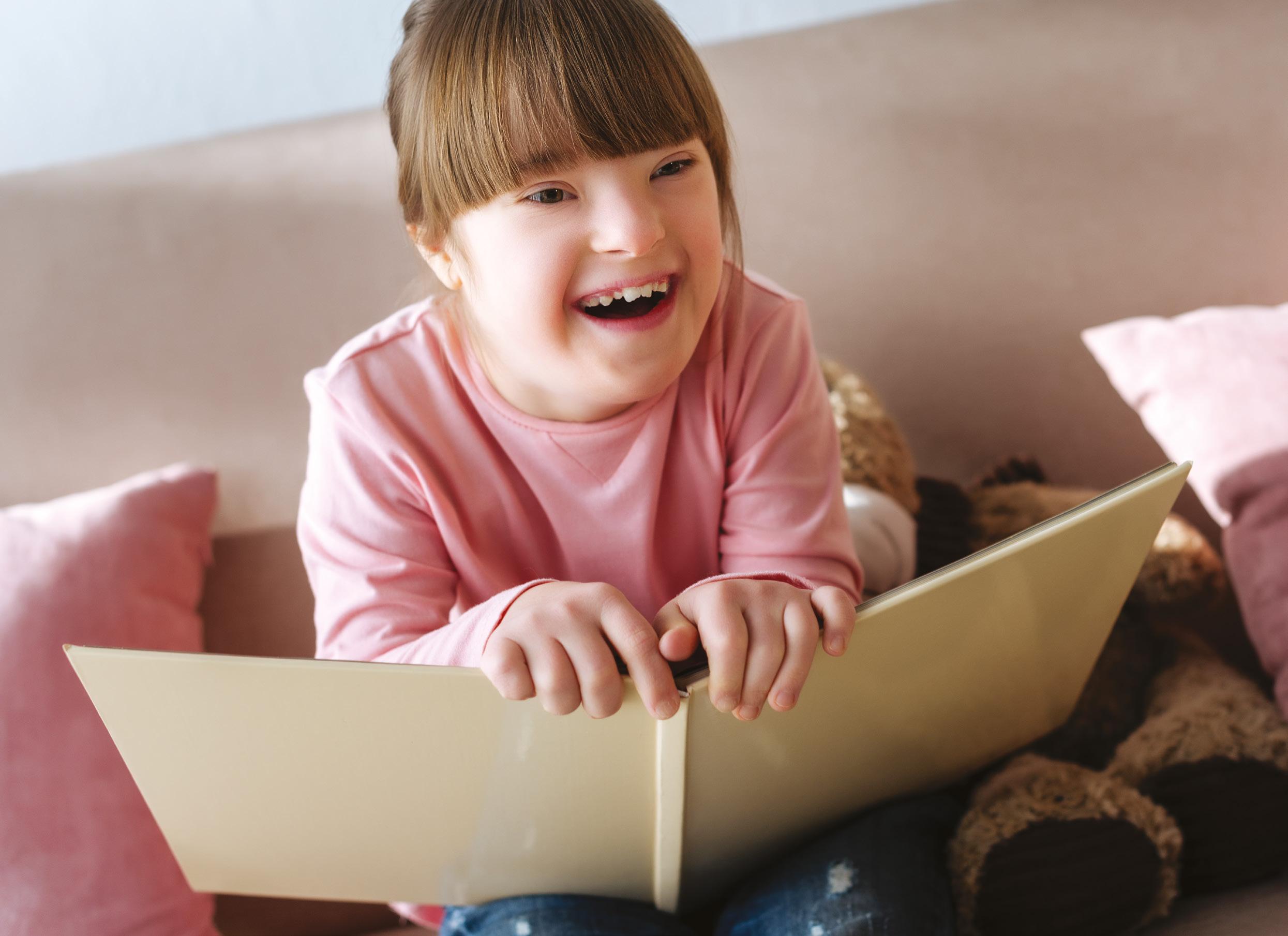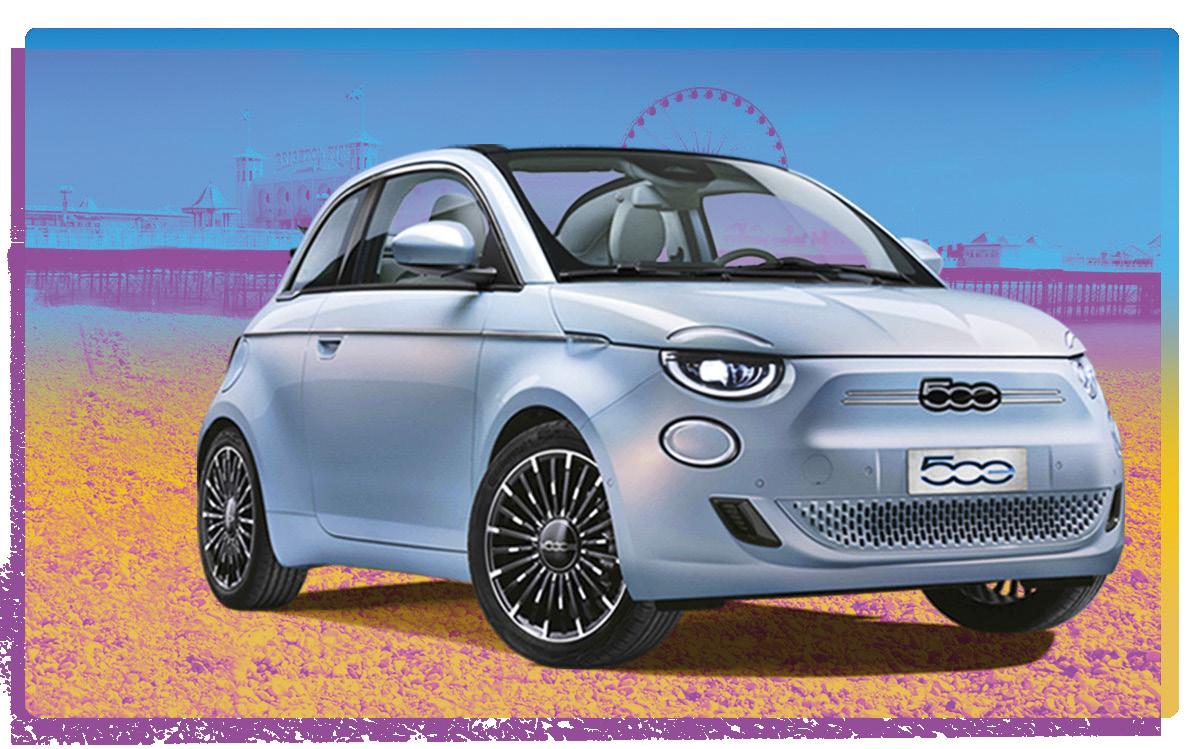
11 minute read
Writing The Books We Needed As Kids
ARTS WRITING THE BOOKS WE NEEDED AS KIDS: DISABILITY REPRESENTATION IN FICTION
Phoebe Jenkins, a writer, examines how disability is often presented in fiction, and how we can do better to be more inclusive in publishing.
Disability representation in media has notoriously been mediocre at best. It has so often been either poorly written or dampened by non-disabled people getting their mitts on it and almost always very few and far between.
Despite the ever-growing amount of representation coming from the community itself, our voices are still very rarely being heard. Far too often, we are spoken over, deemed less important, given less of a chance, and our well-thoughtout, genuine representation is frequently overshadowed by socalled representation written by people who aren’t disabled, and have no relationship to anyone with a disability of any kind. Or, worse, have a relationship with a disabled person and believe that this is worth them talking over other disabled people.
That means only one thing: there is still so, so much work to be done to make the writing and publishing world a safer, fairer place for both the disabled writers and readers within it.
I spoke to authors Lillie Lainoff (author of One For All, her debut novel which released earlier this year, where the main character has POTS, much like herself), Natalia Sylvester (most recently, the author of Breathe and Count Back from Ten, though she has two other published novels. Breathe and Count Back from Ten was released in May, following a girl with hip

dysplasia, once again like Natalia herself) and Stephanie Berchiolly (USA Today bestselling author, with three published novels) about their feelings towards disability in fiction.
Q: What does it mean for you to be able to not only see but contribute to disability representation through your work?
Lillie Lainoff: Writing books with disabled characters, having the representation resonate and aid readers...it truly means the world. It is bittersweet, too – I desperately wish that I had One For All as a teenager. To see a character with my chronic illness accept herself for who she truly is would’ve been life-changing. It is still lifechanging, just in different ways.
Natalia Sylvester: Writing about disability has been transformative
for me. I spent so much of my life feeling I should keep quiet about my disability, not speak up about my needs so as to not be a ‘bother’ - all lies that ableism feeds us - so even the act itself of writing Breathe and Count
Back from Ten was part of a process of refuting those lies and expelling them from my body. It’s also been really healing, because through writing, I’ve connected with others who get what I’ve gone through, and it reminds me that I’ve never been alone.
Stephanie Berchiolly: It’s extremely important because it’s the lens through which I’ve viewed the world my entire life. Growing up, there weren’t many people like me represented on page. Leaving a legacy of entertainment, education, inspiration, and being able to impact the normalisation of disability in this country means a lot to me.
Q: What do you think can, and should, be done to not only make the writing community and publishing industry a better, safer, more welcoming place for disabled authors but to make it so that our voices are truly being heard?
LL: Let us tell our stories and prioritise those stories. I know so many wonderful books by disabled authors with disability representation that get such little attention. Those books could change lives if they were actively publicised more. Before recommending a book with disability representation, research what disabled readers have said about it. The disabled community is not a monolith, so of course not all readers will have agreeing stances on representation, but seeing books like Me Before You, for instance, on Disability Pride Month recommendation lists tells me a lot. Stop equating sick-lit books with books about chronic illness. One is a genre that typically romanticises terminal and chronic illnesses, the other is a book with chronic illness representation.
NS: We need more books by disabled authors, but we also desperately need more disabled editors, marketers, publicists, salespeople...it takes so much collaboration to make a book successful, and it’s important that it be an organic process based on shared lived experiences.
SB: There isn’t enough attention or opportunities for disabled authors in traditional publishing. A lot of talented disabled authors languish in relative obscurity. Indie authors have the ability to make it in their own right with good writing, marketing chops and perseverance. But education and making room for us at the table is desperately needed. It’s hard enough for anyone to get representation but levelling the playing field for a group of people for whom the minefield is impossible to navigate would go a long way. This could be as simple as just having disability specific genres in Amazon categories or hiring disabled editors/agents at publishing companies.

I was lucky enough to speak to Miya Queen, Robin Hahn, and Juan Zambrano (referred to by their initials in their response
to my questions) I also spoke with some readers, to find out their side of the story.
Q: In your personal opinion, what is your favourite example of disability representation in books that was done right/well?
MQ: Perfect World by Rie Aruga so far has been, to me, the best at representing disability and how non-disabled folks see disability that I’ve read thus far. The main characters are having to get through their own battles with
Writing books with disabled characters, having the representation resonate and aid readers...it truly means the world. It is bittersweet, too – I desperately wish that I had One For All as a teenager. To see a character with my chronic illness accept herself for who she truly is would’ve been life-changing. It is still life-changing, just in different ways.
one of them being disabled, and the other struggling with her prejudices in regard to disability. It’s well informed and clear that the author/artist did the work to properly research.
RH: I really loved the disability representation in Even If We Break by Marieke Nijkamp. It was woven into the fabric of the story without being a story solely about disability. We deserve to see ourselves in mysteries, in YA dramas, in fantasy novels – in every genre, not just in “disability books”. Disability is a natural human variation, and we can be heroes in other stories, too.
JZ: My favourite example of disability representation in literature is the portrayal of dyslexia and ADHD in Rick Riordan’s Camp Half-Blood Chronicles (Percy Jackson & The Olympians, The Heroes of Olympus, etc). Both disabilities are indicators of a character’s status as a demigod throughout the series, dyslexia being a demigod’s natural ability to read and understand Greek, ADHD being a demigod’s ever active battle instinct. This does fall into the ‘Disability As a Superpower’ trope, but Riordan does show the struggles that come with both disabilities, without making them a character’s defining traits. Basically, being a demigod sucks, but for reasons beyond disability.

Q: What are people/ other authors that aren’t disabled and aren’t a part of disabled writing and reading communities getting wrong when it comes to disability representation?
MQ: They’re assuming we either are inspirations or something to pity. We deserve acknowledgement that we can be regular people with similar issues to abled people, our issues just might be slightly modified. Also, assuming that being disabled is the be all, end all is an awful trope.
RH: I often see disability used like a plot point, or like a Chekov’s gun, but my identity isn’t a story beat; it’s part of the fabric of who I am. Don’t make a character disabled because you need them to “learn their disability is a superpower” later – instead make them disabled because disabled characters can be heroes, too.
JZ: There are plenty of things people outside the disability community struggle with when tackling disability in literature. For me, a big one is the lack of specificity when it comes to disability. A lot of disabilities are implied in writing, say Tiny Tim using crutches. I would like to see more overt representation. As someone with Cerebral Palsy, I want to see a central character who explicitly lives with it, in any of its many forms. This would allow for more disability visibility, perhaps even exploring more obscure disabilities, thus opening more doors for writers to learn and understand.

Q: What do you think can and should be done to not only make the writing and reading community and publishing industry a better, safer, more welcoming place for disabled authors and readers alike, but to also make it so that our voices are actually being heard?
MQ: Listen to disabled voices. Hear our suggestions, our grievances, our appraisal, and our life experiences. Do proper research in regard to disability and make sure to compensate, and respect, the disabled folks that offer their guidance.
RH: A push towards true accessibility and disability inclusivity in any community means centring disabled voices – especially that of BIPOC disabled voices. Not tokenism; not oneand-done, pat-on-the-back-andmove-on, world-peace-achieved celebration of the non-disabled and non-marginalised folks in power for deigning to celebrate one disabled author, then moving on. A radical change means shifting the focus and continuing to listen to disabled folks, forever.
JZ: More representation is the easiest way to make us feel welcome. Authors could also open more of a dialogue with readers who are disabled, open the doors for feedback from us. We’re not here just to educate but get us more involved.
After hearing from so many people in the community and getting to not only know but also understand their thoughts and feelings on disability representation, I think it’s more than safe to say that our representation has come a long, long way over the course of these past few years; but there is still so much work that needs to be done. Not just on the side of those that are working far harder than they should be to be accurately and fairly represented or listened to.
Listen to disabled authors, hear our voices. Normalising an experience that so few wish to learn about or understand isn’t an easy task, and it isn’t one that will be fruitful overnight, but it’s a task worth fulfilling.
We are tired of being left out of the pages, and I think it’s high time that starts to change. More importantly, I think it can change - in fact, maybe it already has. And with ever so many amazing disabled authors and readers cropping up here, there and everywhere, it truly can do nothing except give us faith in the future of disability representation in literature.
AUTHOR: Phoebe Jenkins TWITTER: @WriteWithPhee
ALL-ELECTRIC
FIAT 500
Best Electric Small Car Fiat 500

AVAILABLE ON THE MOTABILITY SCHEME*
The All-Electric Fiat 500, Dolcevita by Design. And with a range of up to 199 miles^ , you never have to stop exploring.
Get ready to experience a whole new way of driving, the All-Electric 500 offers a “Sherpa Mode”, which intuitively saves energy where necessary to get you to your destination without hiccups.
The All-Electric 500 is available with Passive Entry and a Wearable Key, Attention Assist, Lane control, Traffic Sign Recognition, Autonomous Emergency Braking and Connected services.
fiat.co.uk
*Fiat 500e available on the Motability scheme. Advance payment costs will vary depending on model/version. Model shown: 500e La Prima Electric 42kw 118hp available on the Motability scheme from £2,595 Advance Payment. Vehicles are only available through Motability-accredited participating Fiat Retailers and are not available in conjunction with any other offer. Advance Payments are correct at time of publishing and are subject to orders being placed between 1st October to 31st December 2022. Terms & Conditions apply. Offer may be varied and withdrawn at any time. ^These figures were obtained after the battery had been fully charged. The New Fiat 500 is a battery electric vehicle requiring mains electricity for charging. There is a new test for fuel consumption, CO2 and electric range figures. The electric range shown was achieved using the new test procedure. Figures shown are for comparability purposes. Only compare electric range figures with other cars tested to the same technical procedures. These figures may not reflect real life driving results, which will depend upon a number of factors including the starting charge of the battery, accessories fitted (post-registration), variations in weather, driving styles and vehicle load.










